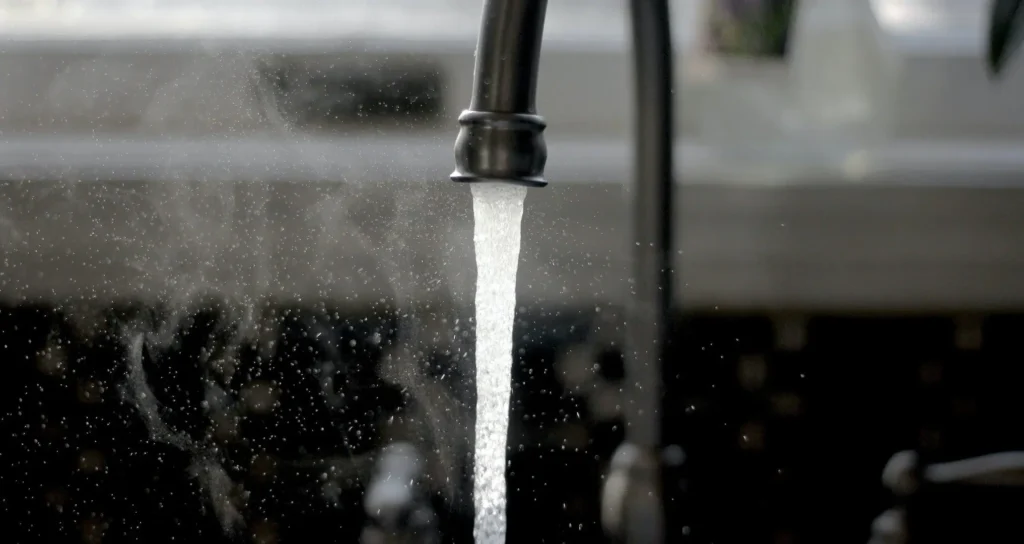
Lead in Drinking Water: Understanding the Risks and Solutions
Lead contamination in drinking water is an issue that continues to pose a serious risk, particularly to children’s health. At American Aqua, we believe it’s crucial for our community to understand the risks associated with lead exposure and the steps we can take to ensure safe drinking water for all.
The Dangers of Lead Exposure
Lead is a potent neurotoxin that has been shown to impair cognitive development in children, leading to lifelong intellectual and behavioral challenges. Scientific consensus indicates that no level of lead exposure is safe for children. Even low levels of lead, previously deemed acceptable, have been linked to significant impairments in intellectual performance and concentration.
Historically, lead-based paint was a primary source of lead exposure for American children, but lead contamination in drinking water has emerged as a significant concern. Many communities across the United States, including those in Southeast Michigan, still grapple with the dangers posed by lead in their water supply.
Where Does Lead Come From?
Lead can enter drinking water primarily through lead pipes and plumbing fixtures. Many homes built before 1930 still have lead service lines, and lead solder was commonly used in plumbing until 1986. According to the American Water Works Association (AWWA), it is estimated that 15 to 22 million Americans are drinking water from systems that include lead service lines. This means that in Southeast Michigan, many residents might be unknowingly at risk.
Moreover, factors like the maintenance and partial replacement of lead water pipes can elevate lead levels in drinking water. While water treatment chemicals can reduce the corrosivity of water and minimize lead leaching, this approach is often only partially successful. The tragic situation in Flint, Michigan, highlighted how inadequate measures can lead to disastrous public health consequences.
Is There a Safe Level of Lead in Water?
Children are particularly vulnerable to lead exposure during their first six years, a critical period for brain development. The Environmental Protection Agency (EPA) has set an action level for lead in water at 15 parts per billion (ppb). However, this level is not indicative of safety for children. In fact, it allows for lead levels to exceed 15 ppb in up to 10% of households tested within a community water system.
In 2009, California’s Office of Health Hazard Assessment proposed a public health goal of 0.2 ppb to protect children’s developing brains. This benchmark reflects the serious impact lead exposure can have, with studies indicating that even a modest increase in lead levels correlates with a measurable decline in IQ.
The American Academy of Pediatrics has called for the elimination of all sources of lead exposure for children, advocating for strict regulations on lead in drinking water, especially in schools and childcare facilities.
What Can You Do?
Understanding whether your drinking water contains lead is essential for your family’s health. The only way to know for sure is through testing, a service that American Aqua provides. Testing is particularly important if:
- Your home has lead-based water lines.
- Your local water company has reported lead contamination in your neighborhood.
- You rely on a private well, especially if there are known issues with lead in your area.
If testing reveals lead in your water, there are steps you can take to mitigate exposure:
- Use a Water Filter: Look for filters certified to remove lead, and use them for drinking and cooking. American Aqua offers a variety of reverse osmosis drinking water filters that are certified by third-party organizations to treat lead contamination.
- Flush Your Pipes: Run cold water for several minutes before using it for drinking or cooking. This helps to clear any lead that may have leached into the water while sitting in the pipes.
- Cook with Cold Water: Always use cold water for cooking and preparing baby formula, as hot water can leach more lead from pipes.
While these steps can help reduce lead exposure temporarily, they are not permanent solutions. The only long-term fix is to replace lead pipes and plumbing fixtures throughout the water supply system.
A Community Effort
At American Aqua, we are dedicated to providing our community with the tools and information needed to address water quality issues effectively. While our water treatment solutions can help reduce lead exposure, we also advocate for comprehensive efforts at the local and state levels to replace outdated lead pipes and improve overall water safety.
It’s crucial for residents of Southeast Michigan to engage with local government and water authorities to push for the removal of lead service lines and the implementation of strict monitoring protocols. Together, we can work toward a future where our children grow up free from the dangers of lead exposure.
Conclusion
Lead contamination in drinking water is a serious issue that requires immediate attention. By understanding the risks, testing your water, and advocating for change, you can protect your family and contribute to a healthier community. At American Aqua, we are committed to helping you navigate these challenges and ensuring that safe drinking water is accessible to all residents in Southeast Michigan. Feel free to contact our office by clicking here to speak with one of our water specialists to discuss your options. Let’s work together to eliminate lead exposure and create a safer future for our children.